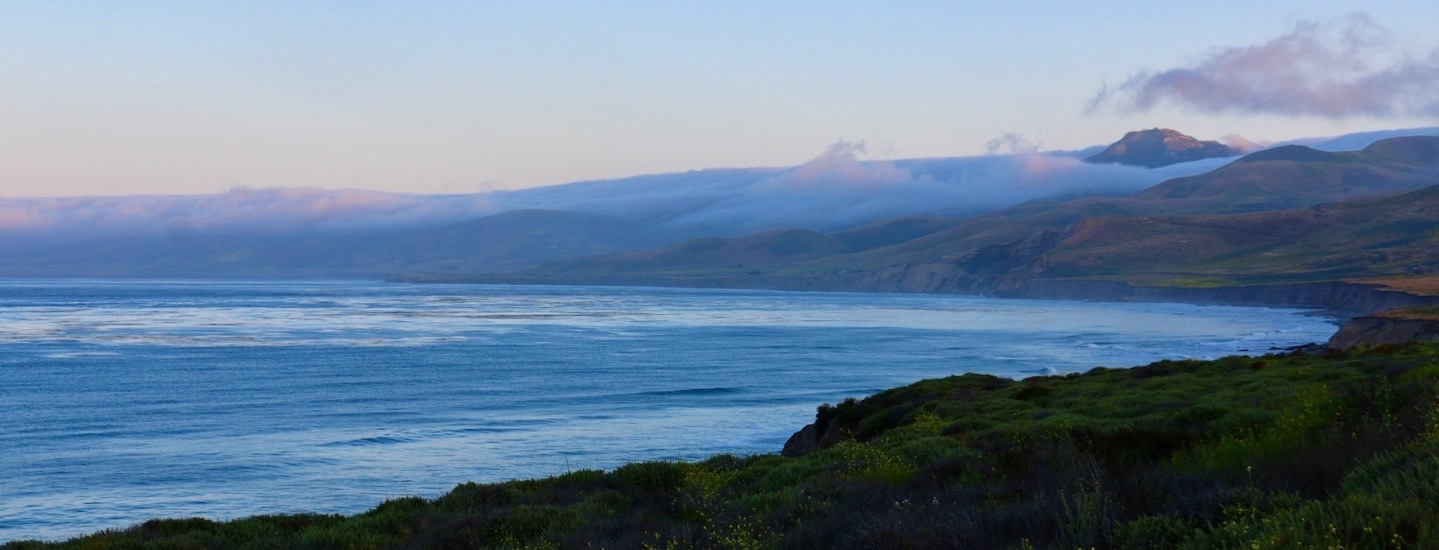
On Tuesday, the California Ocean Protection Council will consider updating the state’s sea level rise guidance. This document will have a seismic impact on how coastal communities plan for the future.
Surfrider is celebrating the update as a scientific effort that translates complex global climate projections towards a usable framework for Californians to apply to our own backyard. This document will help give us a path towards understanding how sea level rise might affect something as small as coastal park bench in San Clemente or as big as a Bay that is adjacent to a toxic power plant.
We're also holding our breath with some apprehension about how the Guidance will be used across California. One read illuminates the high stakes that sea level rise planning will have in our communities. Take these three statements:
“Without intervention, approximately 24 to 75% of California’s sandy beaches could be seasonally or permanently lost due to sea level rise.”
“Today’s once-in-a-lifetime coastal flood could occur annually by 2050 and daily by 2100.”
“A recent study found that groundwater rise may affect thousands of contaminated sites in the San Francisco Bay Area, and that socially vulnerable communities are disproportionately exposed to this risk.”
Let these predictions land, for a second. Some of the most brilliant coastal scientists in the world are working out of our backyard universities, and they’re telling us that if California does nothing, three quarters of our beaches will be gone for the next generation. That’s a jaw dropping thought.
Groundwater rise near toxic sites and poor communities is an even more unsettling concept — especially when considering that a lot of toxic sites have been managed by ‘capping,’ which is essentially a defense from above, when the threat of emergent groundwater comes from below.
All of this is piled on top of the statistics that many people are already pretty familiar with: The $250 billion dollar pricetag that coastal flooding will have on property in California over the course of the century, the likely loss of many beloved waves due to changing sand dynamics, and the potentially nightmarish emergency scenarios that will happen in places that are already exposed to flooding when the combination of huge surf, big tides and sea level rise are unleashed at the same moment.
The risks of not planning for sea level rise, or of planning for it poorly, are existential. We’ve read the Guidance with a fine tooth comb, and come up with a couple comments we think should be front of mind as it’s being considered for approval by the state on Tuesday.
Inclusion of the range of low to high sea level rise scenarios is key.
The Guidance describes five sea level rise scenarios based on emissions projections, ranging from low to high. The Guidance recommends using the high scenario to plan for projects that will have a long lifespan and are not risk tolerant: this scenario is critical to apply to projects that simply cannot afford to be vulnerable to sea level rise (we have two nuclear power plants within a few hundred feet of the coastline in California, for instance.) Communities should also value their public trust resources enough to take a precautionary, low-risk approach to protecting them. Planning for the high scenario when prioritizing beach preservation for instance, will help us save some of those 75% of beaches we can expect to lose if we do nothing.

sea level rise scenarios from OPC's latest guidance
Proactive planning remains urgent
Relative to the state's last sea level rise guidance update, two projections are noticeably different about this updated Guidance: The high scenario is 6.6 feet as opposed to 10.2 feet of sea level rise, and the estimate for sea level rise by 2050 is closer to 1 feet than 3 feet.
On first read, this might give the impression that California's big Sea Level Rise Problem isn’t as urgent as we thought, but this is dead wrong. Yes, scientific projections have gotten more nuanced, and the Guidance is now telling us that we can expect a lower rate in sea level rise than we had previously estimated in the sooner half of the century (by 2050). However, the higher rates are still coming by the end of the century and beyond.
We can't sit back and plan for less disaster because as a statewide community, we were already playing defense instead of offense in dealing with sea level rise. Capitola, Imperial Beach and San Francisco have regularly found themselves in emergency flood scenarios during the big storms of the last few years, and all of us know beaches that are now gone at high-tide. Plus, nearly 40% of Southern California is walled off with beach-killing seawalls. Another foot of sea level rise will translate into 40 foot of lateral flooding in some places - imagine how that will look in your community or the beach you visit if we stay on the current path.
And if you are somewhere near, say, Humboldt Bay - you can still expect way more sea level rise than the state average of .8 feet due largely to vertical land motion. So it’s important to remember 1 foot is just an average, and many communities will still be dealing with relatively extreme sea level rise in the short term.

Kron4 news image
We are at a fork in the road
Surfrider loves that the Guidance discusses ‘adaptation pathways’ as an opportunity to phase short and long-term adaptation strategies over time to build resilience. The idea here is that sea level rise rates accelerate over time, so communities can take baby steps today to get ahead of the worst problems in the future. The Guidance should make more clear though that the general purpose of adaptation pathways is to take advantage of what little window we have to embark on a path towards equitable, nature-based resilience options now.
Putting another seawall up on the beach shouldn’t be considered a step towards resilience - it’s a step in the opposite direction. Lving shorelines and other nature-based solutions are generally the most resilient way to respond to sea level rise, and the use of phased adaptation is a way to achieve those types of projects in the future where they can’t be achieved today (due to cost, or availability of space or politics.)
A great example of phased adaptation in a difficult situation can be found in SANDAG’s decision to move the Del Mar portion of the LOSSAN rail corridor off eroding bluffs. Phased adaptation there involves walling up the bluffs today, but that seawall is designed and financed to be removable and SANDAG is pursuing studies, permitting, financing and outreach toward realignment in tandem with its short-term armoring strategy.
IPCC Sixth Climate Assessment.
The Beach is our Greatest Public Trust Resource
The State's communications on sea level rise could better emphasize the fact that California’s 1,100 miles of public shoreline is literally globally iconic. Shouldn’t it be considered ‘not risk tolerant’, since it’s the foundation of our economy, our way of life, and our mental health along the coast? Shouldn’t we be taking a precautionary approach, to the extent still possible, to protecting it? At the very least, the Guidance should explicitly include examples where the public trust has been prioritized in planning so people can imagine that it’s possible.
For instance, Highway One in Piedras Blancas was realigned approximately 300 feet inland over a period of about ten years, and the shoreline there has rebounded after years of coastal squeeze. It’s also mind blowing to Surfrider that we still have to oppose proposals for development that are literally in sea level rise hazard zones in the short-term; including the recent development that was approved in an area in Stinson Beach that has recently been evacuated due to flooding.
The Guidance should make clear that phased adaptation should be aimed at protecting our public trust resources, and short-term strategies that privatize benefits should only be allowed where legal and where a long-term, more equitable vision that includes realigning infrastructure off the coast is also being pursued.

Charles Lester Keynote Presentation Slide for "H20 Conference Keynote" 2024
--
Join in the Ocean Protection Council meeting on Tuesday June 4 (hybrid) to tell the State how sea level rise planning will impact your community!
